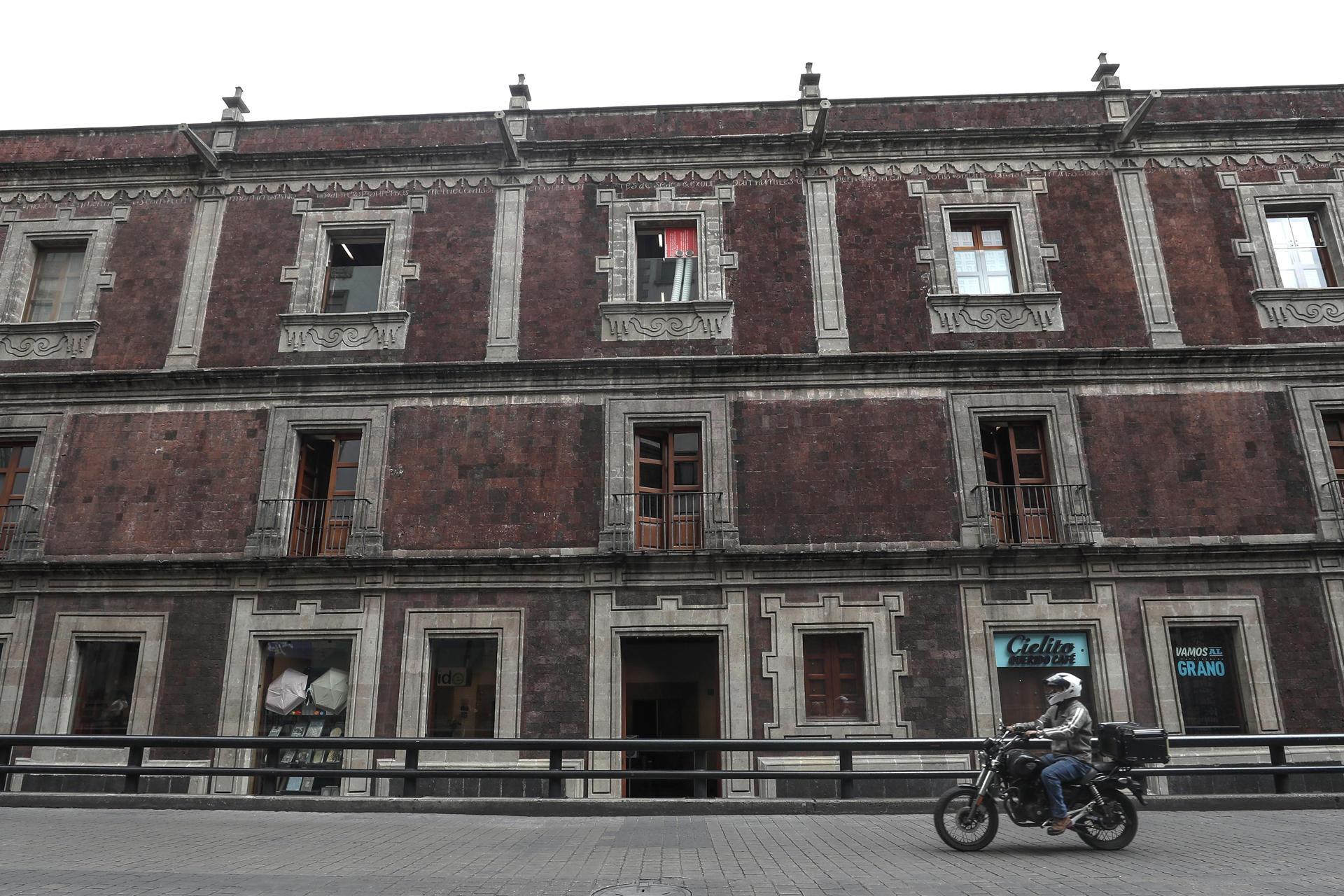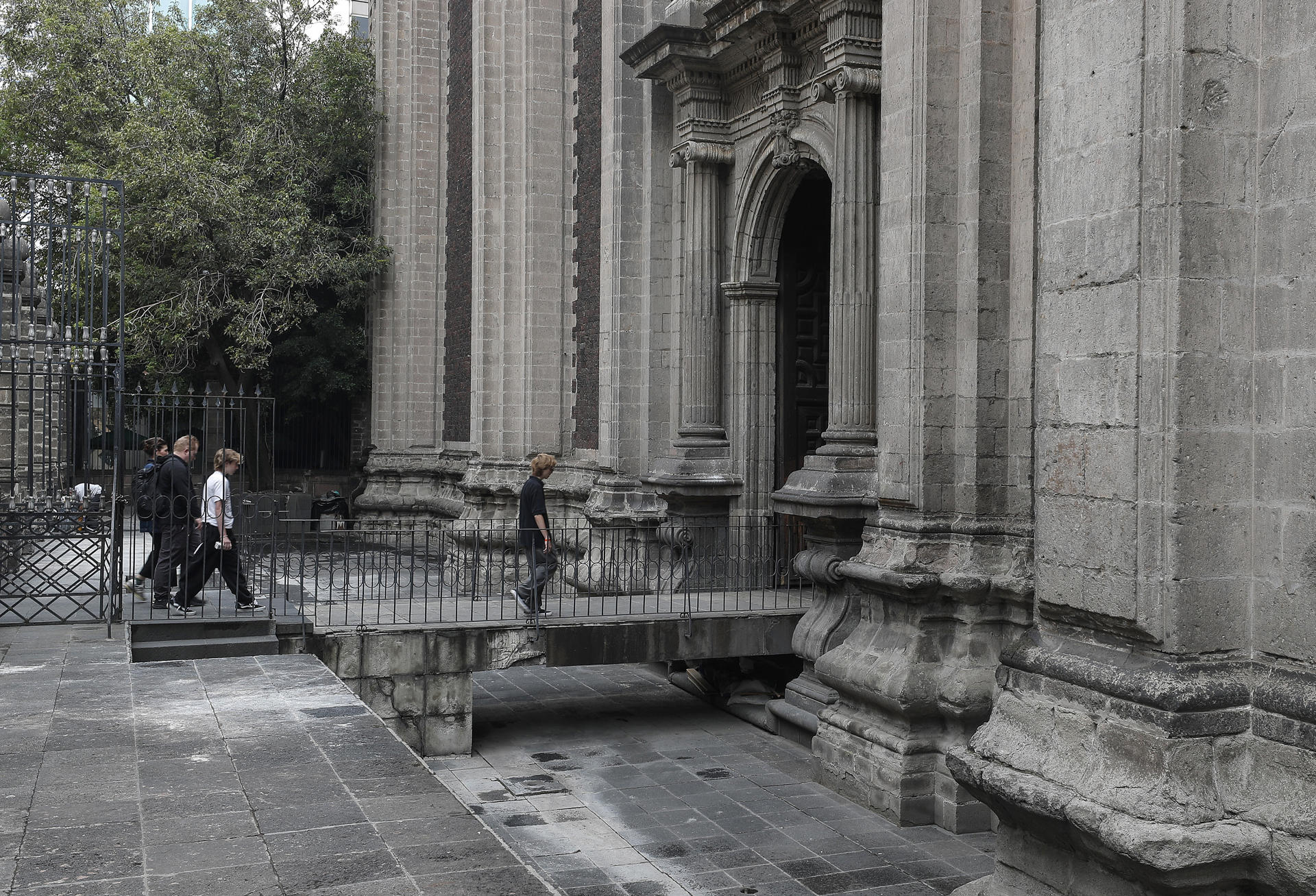Mexico City is sinking between 10 and 30 centimeters a year: scientists warn of possible consequences

With subsidence rates averaging between 10 and 30 centimeters per year, and in extreme cases reaching up to 40 centimeters per year, Mexico City is facing an unprecedented subsidence process that threatens its housing viability and urban infrastructure.
This was warned Tuesday by scientists from the Geology Institute of the National Autonomous University of Mexico (UNAM), who indicated that if current conditions continue, forced population displacement and the incapacity of various areas of the capital could occur in less than a decade .
Subsidence, or the gradual sinking of land, has become a constant in the Valley of Mexico due to multiple interrelated factors.

UNAM geologists warn that the subsidence is irreversible and will create uninhabitable areas. Photo: EFE/ Isaac Esquivel
Uncontrolled urban growth, the overexploitation of aquifers, the weight of modern construction, and the nature of the subsoil—composed mostly of clays and highly compressible volcanic materials —are pushing the terrain's capacity to support the city's infrastructure to the limit.
A city sinking without restraint Geologist Sergio Rodríguez, a researcher at UNAM, explained that the phenomenon is not new, but has accelerated in recent decades.
"With an average subsidence of 15 to 30 centimeters per year, if you multiply that by 10 years, that's three meters, and if you multiply that by 100, it's incredible," he said. According to Rodríguez, one of the most representative examples of the phenomenon is the Angel of Independence, to which steps have had to be added over time to compensate for the lowering of the ground level.
According to experts, the subsidence process is irreversible in the most affected areas. Wendy Morales, also a geologist at UNAM, stated that "this is the point of no return. There is no way to stop this process."
Morales explained that the only viable options are the gradual adaptation of the city to its new geological reality or the implementation of strategies to relocate vulnerable populations.
Floods and rising inequality One of the most visible consequences of subsidence is the increase in the frequency and intensity of flooding, especially during the rainy season, which runs from June to October.
Currently, it is estimated that 70% of the capital's land area is prone to flooding . This vulnerability is due not only to the lowering of the terrain, but also to the waterproofing of urban land—covered by asphalt and concrete—and the disappearance of rivers and natural bodies of water that once served as drainage.
In areas like Iztapalapa , one of the most densely populated districts in the southeast of the capital, subsidence of up to 40 centimeters annually is recorded. Despite having a high concentration of groundwater extraction wells, the municipality faces chronic problems with drinking water shortages.

Seventy percent of Mexico City's land area is prone to flooding. Photo: EFE
This apparent contradiction is, in Rodríguez's words, a social paradox: "Those who draw water from wells are those without a supply and are also the ones who suffer from flooding and subsidence. It's a social paradox that presents itself as an issue worthy of analysis."
The situation is aggravated by the unequal distribution of resources. While newly constructed buildings, some as high as 50 stories, guarantee access to water through private contracts and high rates, residents of working-class neighborhoods must deal with rationing, water rationing, and deteriorating water infrastructure .
"They'll never have problems with water shortages because they pay a lot for that," Morales said.
Perspectives and challenges for the city The uncontrolled expansion of the real estate sector, combined with the effects of climate change —such as extreme rainfall and more intense weather events —is increasing the risk that large areas of the capital will become unsuitable for urban living in the short and medium term.
Given this situation, geologists consider it urgent to implement adaptation measures to reduce the social impact of the phenomenon: "People and governments are going to have to start looking for adaptation measures so that the population suffers the least impact and can return to their daily lives," Morales concludes.
However, Morales warns that these solutions will only offer partial relief. If structural decisions are not taken now, some areas of the city will be unsustainable for daily life in about six years.
Rodríguez raised the need to decentralize the capital through the planned development of new cities or urban centers with services, employment, and basic infrastructure. "The only possible future is to decentralize (...). To create new cities or new, more planned urban centers where there is employment, hospitals, schools, and community centers, and thus begin to decentralize this city," he explained.
The experts also emphasized the role of the informal economy as a key driver of growth for these future communities, believing that a significant portion of the displaced population could find new opportunities there. They also recommended relocating strategic sectors such as industry, public administration, and higher education to other regions of the country as a measure to alleviate pressure on the capital.

The above-ground level of the Metropolitan Cathedral in Mexico City. Photo: EFE
*This content was rewritten with the assistance of artificial intelligence, based on information from EFE, and reviewed by the journalist.
eltiempo




